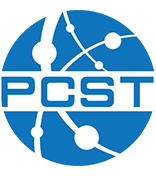Perspectives towards a science centre’s redevelopment
Author: Daniel Solis – University of Otago, New Zealand
Co-authors:
David A. W. Hutchinson – The Dodd-Walls Centre, Department of Physics, University of Otago
Nancy Longnecker – Centre for Science Communication, University of Otago
Otago Museum’s Discovery World was a science centre that received 65,000 visitors annually. With over 20 years of existence, it was completely revamped in 2017. This research gives voice to three groups in relation to Discovery World and its redevelopment: 227 visitors were asked open questions to describe Discovery World; 18 children, chosen for their interest in science and outreach, participated in focus groups and created collaborative Strengths, Weaknesses, Opportunities and Threats (SWOT) Analyses about the Light Zone, a space dedicated to light and electromagnetism; 10 museum staff, representative of decision makers and floor staff, provided input via a semi-structured interview about Discovery World and its redevelopment. Visitors stated they arrived expecting to have fun and left liking more topics on animals, biology and earth. Tropical Forest, a warm venue with live butterflies, was the favourite site. In the exhibits zone, science engagement and learning had a strong presence, mainly through the Light Zone, the Mind Game exhibit and the Science Shows. Complementing the visitor surveys, the Focus Groups stated that successful exhibits at the Light Zone were visually attractive, allowed audience participation and interaction among visitors. They also suggested having better links between exhibits and using challenges to increase interactivity. The latter matches other visitors’ perspectives, since the only non-Light Zone exhibit that was often mentioned (Mind Game) was probably the most challenging one. The Museum Staff showed a variety of thoughts about the redevelopment and characteristics of good exhibits; however, the Plasma Room (a subsection of the Light Zone) was mentioned as a favourite by all. Good exhibits are characterised by staff as those that do not break easily and are engaging while being more than a game.
The author has not yet submitted a copy of the full paper.
Presentation type: Visual talk
Theme: Science
Area of interest: Applying science communication research to practice
